Core Nutritionals Hair, Skin, & Nails is the sixth supplement added to the Core Lifeline Series, with five capsules to help users maintain their beauty.
In October of 2021, Core Nutritionals launched the Core Lifeline Series, which started with five powerful health supplements highlighted by Core Gut and Core Soothe. That wasn't the end of the series, though - Doug Miller and his team teased that more formulas would be on the way.
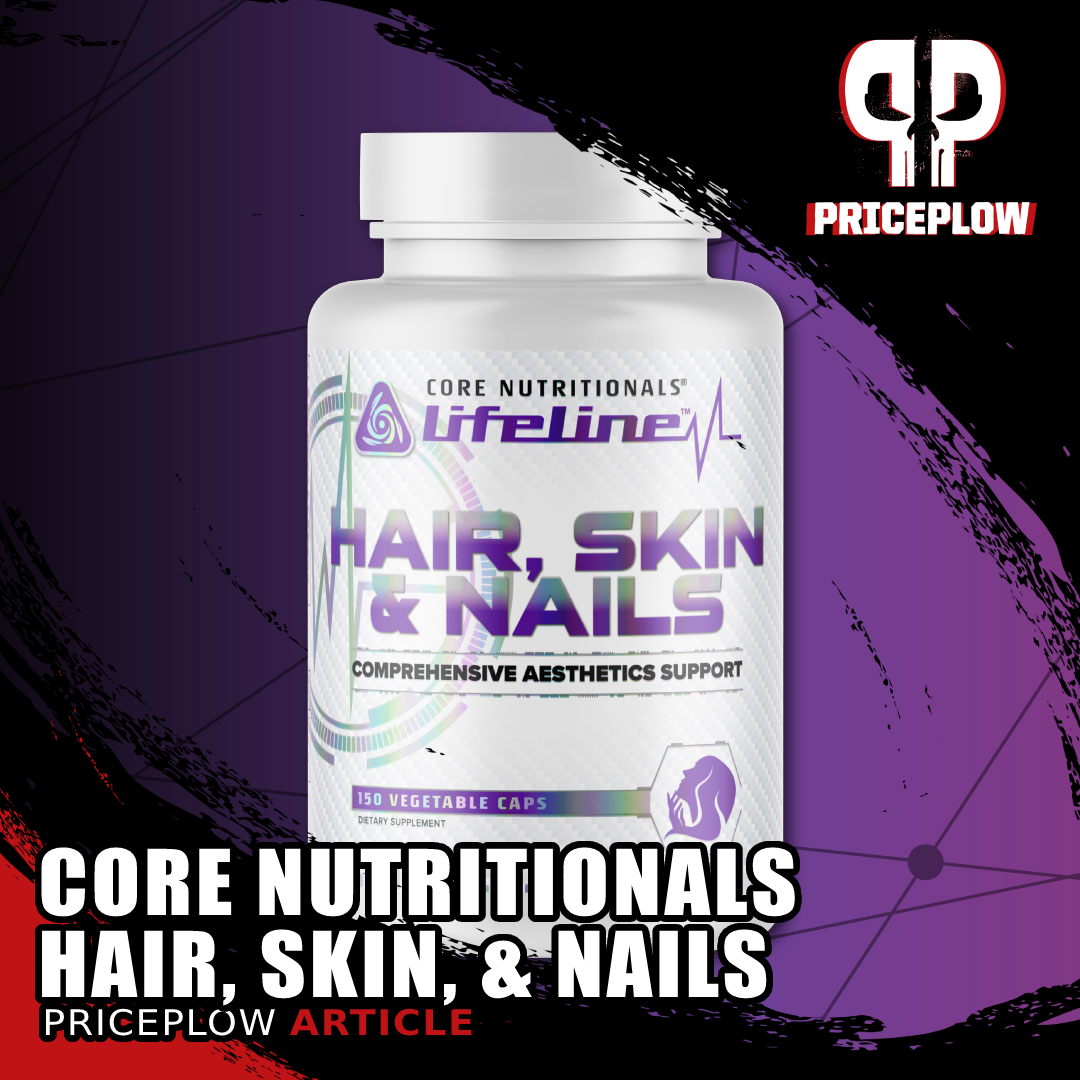
Core Nutritionals Hair, Skin, & Nails is the sixth supplement added to the Core Lifeline Series, with five capsules to help users maintain their beauty.
In May of 2022, we're proud to announce the sixth supplement added to the lineup:
Core Nutritionals Hair, Skin, & Nails
Core Hair, Skin, & Nails is a health and beauty supplement containing five capsules worth of powerful ingredients to be taken each day for comprehensive aesthetic support. It includes key vitamins and beneficial compounds to support beauty and wellness from the inside and out.
In this article, we'll dive into some of the trademarked, novel ingredients like Astrion, Dermaval, and Ceramosides, and also explain the keratin peptides inside. As you can see from that list, this will be no ordinary "Hair, Skin, and Nails" supplement constantly marketed to women. This one has some advanced technology inside.
First, let's check PricePlow's coupon-powered prices and give you the opportunity to sign up for our Core Nutritionals news alerts:
Core Nutritionals Lifeline - Hair, Skin, & Nails – Deals and Price Drop Alerts
Get Price Alerts
No spam, no scams.
Disclosure: PricePlow relies on pricing from stores with which we have a business relationship. We work hard to keep pricing current, but you may find a better offer.
Posts are sponsored in part by the retailers and/or brands listed on this page.
Core Lifeline Hair, Skin, & Nails Ingredients
In a single 5 capsule serving of Hair, Skin and Nails from Core Nutritionals Lifeline, you get the following:
-
Vitamin C (ascorbic acid) – 100 mg (111% DV)

CORE Nutritionals Hair, Skin, & Nails Ingredients is not your standard beauty supplement. In a category that's long been given weak formulas, this one stands above!
Most of us know that vitamin C is a powerful antioxidant and immunity booster – but did you know that it's also essential for healthy collagen production? In 2018, a meta-analysis of 10 studies found that supplemental vitamin C is able to boost your body's production of collagen type I,[1,2] the most abundant and well-studied type of collagen found in mammals and other vertebrates.
In fact, skin cells are absolutely dependent on vitamin C for collagen synthesis.[3]
Vitamin C's antioxidant capacity is also part of why it's so good for skin: healthy skin contains high concentrations of C, which protects the skin from UV-induced photodamage.[3] This has led some to experiment with topical application of vitamin C directly onto the skin, but recent research indicates that raising vitamin C blood levels through oral supplementation is a better strategy for increasing vitamin C concentrations within skin tissue.[3]
However, the doses used in studies of oral vitamin C supplementation for skin health are typically multiple grams per day. It's definitely better to get an extra 100 mg of vitamin C than not, so this dose is beneficial, but we think Core Nutritionals could have used a bigger one.
-
Biotin (as d-Biotin) – 5000 mcg (16,667% DV)
Biotin (vitamin B7) has long been the mainstay of hair, skin and nails supplement formulas, and for good reason: biotin deficiencies cause big problems for all three, problems ranging from dermatitis[4] to hair loss.[5,6]
In one study on women with brittle nails, high-dose biotin was able to significantly reduce split ends in about 50% of the women who participated in the study.[7] However, the dose used in this study – 2.5 grams – is about 500 times the size of the dose used in Hair, Skin and Nails from Core Nutritionals.
However – in this case, a smaller dose is almost certainly more appropriate than 2.5 grams. We take supplemental biotin in order to prevent the problems that arise from biotin deficiency, not to treat hair, skin and nail disease with supra-physiological doses of biotin.
-
Methylsulfonylmethane (MSM) – 1000 mg
Clinical research has shown that MSM supplementation can improve the appearance of skin by reducing signs of skin aging[8] owing to the fact that it consists of about 34% sulfur, a mineral that's crucial for the optimal health of not just skin but also joints, ligaments, tendons, and in general, all your body's connective tissues.
Another study that examined MSM's effects on specific metrics of skin health found that it was capable of significantly increasing the elasticity and hydration of your skin,[9] while also offering some slight improvements to skin wrinkles and joint pain.[9] In this study, skin elasticity improved by over 20% – that's a difference that you're likely to see in the mirror. Note that this study was done with a combination of MSM, hyaluronic acid (HA), and carnosine – although we don't have carnosine in the Core Nutritionals hair, skin and nail formula, we do have hyaluronic acid. And moreover, the doses of HA and MSM used here are both significantly larger than what was used in the study!
Other studies looking specifically at MSM's effects on joint health have found that it's capable of significantly improving joint pain.[10]
-
Hydrolyzed Keratin Peptides – 500 mg
Hydrolyzed keratin peptides (HKP) are commonly used for skin and hair health, but usually in topical applications.
Our female readers may be very interested in Core POISE.
So the question we want to answer is: will HKP have the same benefits when administered orally?
A 2019 study published in the Journal of Cosmetic Dermatology set out to answer this exact question, pitting oral HKP against topical HKP in the same experiment. The researchers found that both oral and topical preparations of HKP were able to measurably improve skin elasticity and density[11] – and interestingly, the two routes of administration complemented each other in their effects.[11]
The oral HKP specifically increased skin elasticity and reduced the appearance of pores, while the topical HKP increased hydration in the outermost layer of skin.[11]
So, you may wish to consider combining your LIFELINE Hair, Skin and Nails supplementation with a topical HKP, in order to maximize the effectiveness of this ingredient.
-
Astrion: (Astragalus membranaceus and Centella asiatica) Root extracts - 490 mg
There are three main factors in skin health:
- Collagen integrity
- Hyaluronic acid content of skin
- Inhibition of matrix metalloproteinases (MMPs)
A failure to meet one or more of these conditions will produce winkling, dehydration and discoloration of skin. If the problem is severe enough, skin disease eventually results.
Astrion from NuLiv Science is formulated to ensure that all three conditions are met. It consists of extracts from Astragalus membranaceus and Centella asiatica, two plants which have been used for hundreds of years in traditional Chinese medicine.
From these two plants, we get unique bioactive compounds:
- Astragalosides (from Astragalus)
- Asiaticoside and other triterpenes (from Centella)
Astragalosides (AST) come from Astragalus membranaceus. As powerful antioxidants, they have a multitude of benefits for human health, ranging from cardiovascular to immunological effects. One interesting thing about ASTs is that they're capable of crossing the blood-brain barrier, something most antioxidants can't do.[12] This means they're capable of protecting neural tissue from oxidative stress.
The four types of astragaloside are named, conveniently, AST I, II, III and IV. Usually, all four of these are studied together, since the Astragalus extract naturally contains the full spectrum of astragalosides.
However, there is research that looks at the effects of specific astragaloside types.
Astragalosides support skin cell health and protect collagen
In one 2013 study, AST IV was found to protect collagen from being damaged by ultraviolet (UV) light, while also inhibiting MMP activity in cells that had been irradiated by the UV.[13]
Another study from 2012, this time looking at AST II, discovered that it protects fibroblasts, skin cells found in the dermis layer of human skin, from UV-induced damage and increased their viability under UV stress by 142.8%[14]
In both studies, researchers concluded that AST treatment would be beneficial even for skin that isn't exposed to radiation, simply because of AST's effects on collagen.[13,14]
Asiaticosides increase hyaluronic acid concentrations and collagen production
Asiaticosides are triterpenes that come from Centella asiatica, otherwise known as gotu kola. Most gotu kola extracts are standardized for asiaticosides.
A research review published in 2013 found that gotu kola extracts, largely because of their asiaticosides, are able to:
- Increase delivery of protein, collagen, and hydroxyproline to wounds, speeding healing[15]
- Improve lysine and proline metabolism – two important constituents of collagen[15]
- Increase HA production in wounds, speeding healing[15]
- Increase collagen synthesis in the dermis[15]
NuLiv, the manufacturer of Astrion, has funded 12 different studies looking at Astrion's overall effects, which show that it's capable of increasing collagen type 1 production by 60% in the epidermis and 80% in the dermis – pretty significant effect sizes! Astrion also increases collagen type III levels by 80%, and boosts HA production by 20% in epidermal cells.[16]
The first clinical trial for Astrion found that subjects taking Astrion were able to reduce their skin wrinkles by 15% and their melanated sunspots by 17%, giving them a smoother, less blemished appearance.[16]
-
Setria L-Glutathione – 250 mg
Setria L-Glutathione is a trademarked form of glutathione (GSH), an incredibly powerful antioxidant that's often described as the "master antioxidant" of the human body. Oral bioavailability of glutathione has been called into question,[17] but it turns out that reduced glutathione can be detected in the blood's protein-bound fraction 1-2 hours after ingestion.[18]
Antioxidants are important because they neutralize free radicals and reactive oxygen species (ROS), which are sort of like nature's entropy on the human body – these highly unstable molecules are constantly bombarding human tissue, causing random damage to it in the process. Damage caused by "oxidative stress," a phrase that refers to the action of free radicals and ROS, is a prime cause of age-related decline in function and appearance.[19]
250 milligrams of Setria Glutathione -- the dose we have here from Core -- has been successfully used in at least one research trial.[20] Sixty healthy women aged 20-50 were recruited for a placebo-controlled trial, which determined that glutathione "effectively influences skin properties" and "showed a significant reduction in wrinkles compared with those taking placebo". The researchers concluded that the ingredient has "various beneficial effects on skin properties and is possibly an antiaging agent, at least in middle-aged female subjects".[20]
Additionally, research literature is full of articles showing how GSH is crucial not just for fighting free radicals and ROS, but also increasing the production of other enzymes, reducing other antioxidants like vitamins C and E so that they can also participate in defending your body against oxidative stress, removing mercury from the brain, and maintaining mitochondrial function, which is absolutely essential for optimal health.[21]
-
Hyaluronic acid – 240 mg
Hyaluronic acid (HA) is an osmolyte, which means that it regulates the balance of water within cells. When it comes to skin cells specifically, HA's ability to draw water into cells helps skin cells retain water and stay hydrated.[22]
Synergy! Astrion increased hyaluronic acid synthesis and hyaluronic acid synthase 2 gene expression.[16]
Although HA is most commonly used as a topical ingredient, research shows that HA also moisturizes skin after being ingested.[23] This is based upon data from a review that analyzed several studies, of which 240 milligrams -- the dose we have here -- was the largest dose used in the research covered.[23]
So with this dosage, which is greater than what's used in most skin and joint supplements, brings with it a vast amount of clinically-supported benefits, including the results of "improved dry skin on the face and whole body" and "significant increase of skin moisture" as determined from the study that used 240 milligrams per day.[23,24]
-
Dermaval – 50 mg
Humans have six genes that regulate the function of the enzyme elastase in the extracellular matrix, which is sort of like scaffolding for our body's tissues. Elastase 2, also referred to as human neutrophil elastase (HNE), is implicated in degenerative and inflammatory skin diseases because it degrades collagen type IV and elastin in the extracellular matrix, which damages skin tissue over time.[25] Because of HNE's negative effect on skin,[26] we want to inhibit it as much as we can.
Fortunately for us, according to a 2013 study, Dermaval is capable of wholly preventing the release of HNE that typically occurs in response to high levels of blood glucose![27] Dermaval is a trademarked blend of pomegranate extract, asparagus, okra, coffeeberry extract, quercetin, acerola, camu camu, acai, and mangosteen.
Since HNE is released in humans with high blood sugar levels,[28,29] this ingredient may be best for those who are higher-carb dieters. Interestingly, Dermaval works by reducing HNE release, but it does not attenuate high blood sugar levels itself.[27]
-
Ceramosides Wheat Extract (Triticum sativum) (Seed) – 30 mg
The Ceramosides wheat extract is standardized for ceramides, lipids found in skin cells that are produced by our bodies when we're young, and support optimal hydration and elasticity in our skin.[30] Unfortunately, ceramide production decreases as we age. This can lead to wrinkles and even cracks in our skin.
Fortunately, you can supplement with ceramides! Two different double-blind, randomized, placebo-controlled studies have found that 30mg per day of ceramide powder, the same dose we have in the Core formula, can increase skin hydration and reduce the appearance of aging.[31,32]
With Ceramosides, we know that we're getting a standardization of at least 50% glycosphingolipids and at least 40% digalactosyldiacylglycerol (DGDG), the lipids used in the studies above.
Dosage and Instructions
Take five capsules daily, with or without food. If you do AM/PM supplement dosing, you can split the five capsules up in a 3/2 style split to your liking.
Conclusion: Another Incredible Lifeline Supplement from Core
We've been impressed with each and every supplement in the Core Lifeline Series, and Hair, Skin, & Nails is no exception. This is the beauty supplement that we've wanted to see for quite some time.
For over a decade, our system has categorized and indexed supplements in this category, and quite frankly, the vast majority of them are abysmal. It's downright shameful how companies market some of these supplements to women.
Doug Miller and his team at Core Nutritionals decided to do something about the situation. They put together a supplement with useful ingredients that have clinical backing. It's not just another glorified multivitamin like most of the rest of the competition.
Paired alongside Core Collagen (new flavors were released alongside Hair, Skin, & Nails) and Core Poise (which can be considered a predecessor to the Lifeline Series), Core has quite a powerful health and beauty stack for women.
Core Nutritionals Lifeline - Hair, Skin, & Nails – Deals and Price Drop Alerts
Get Price Alerts
No spam, no scams.
Disclosure: PricePlow relies on pricing from stores with which we have a business relationship. We work hard to keep pricing current, but you may find a better offer.
Posts are sponsored in part by the retailers and/or brands listed on this page.
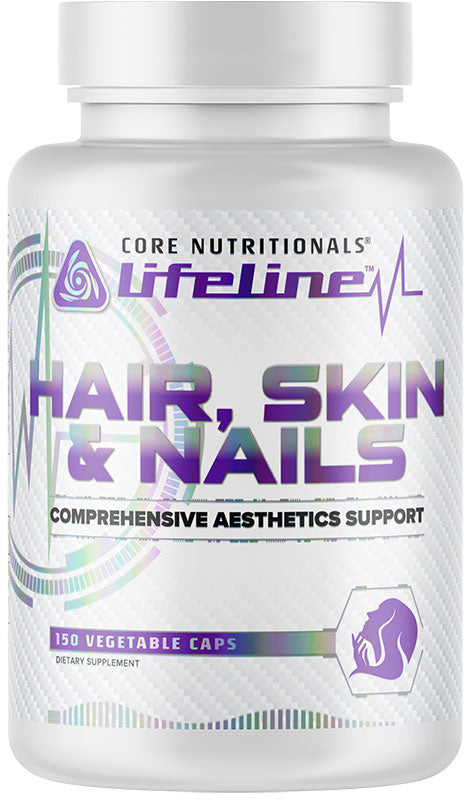
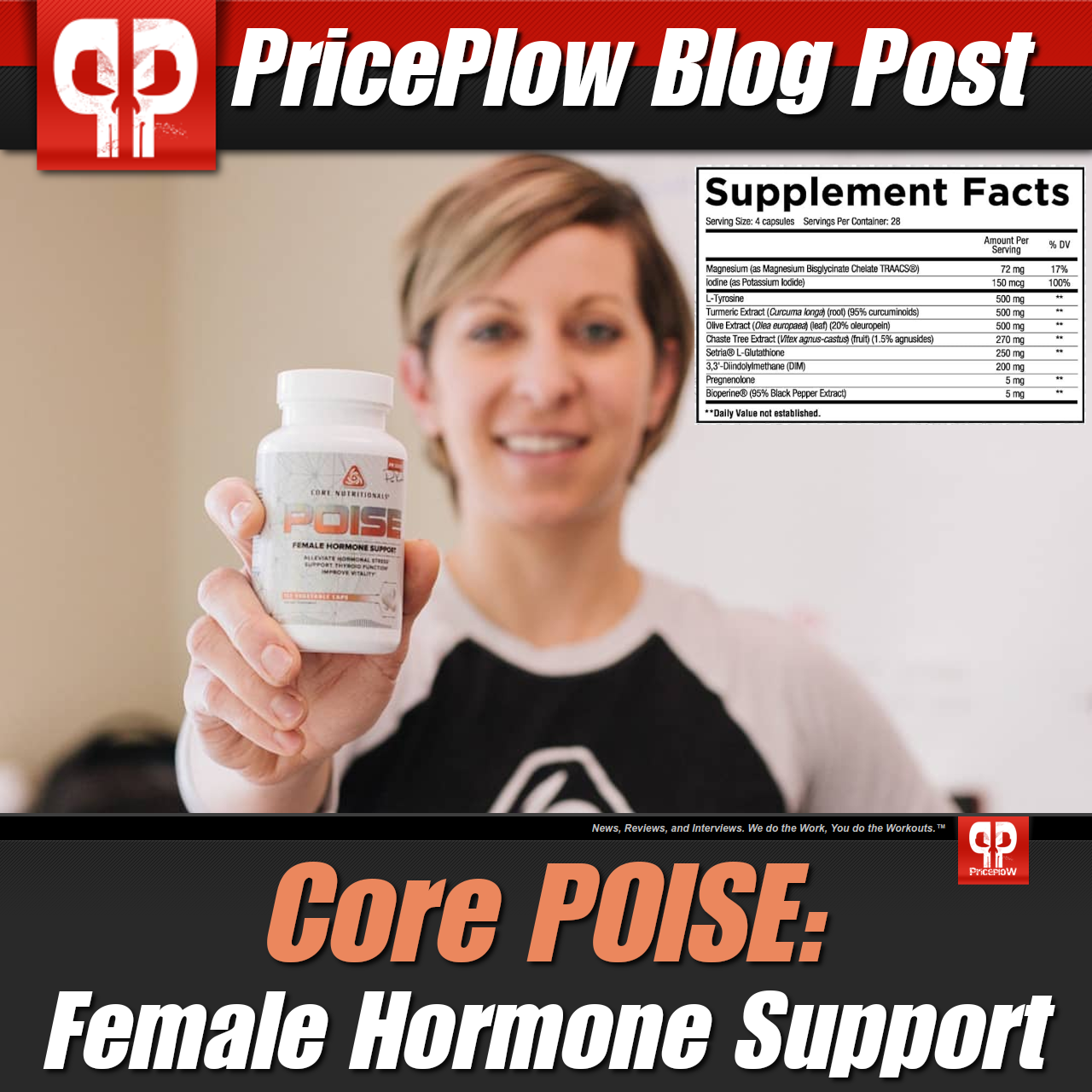
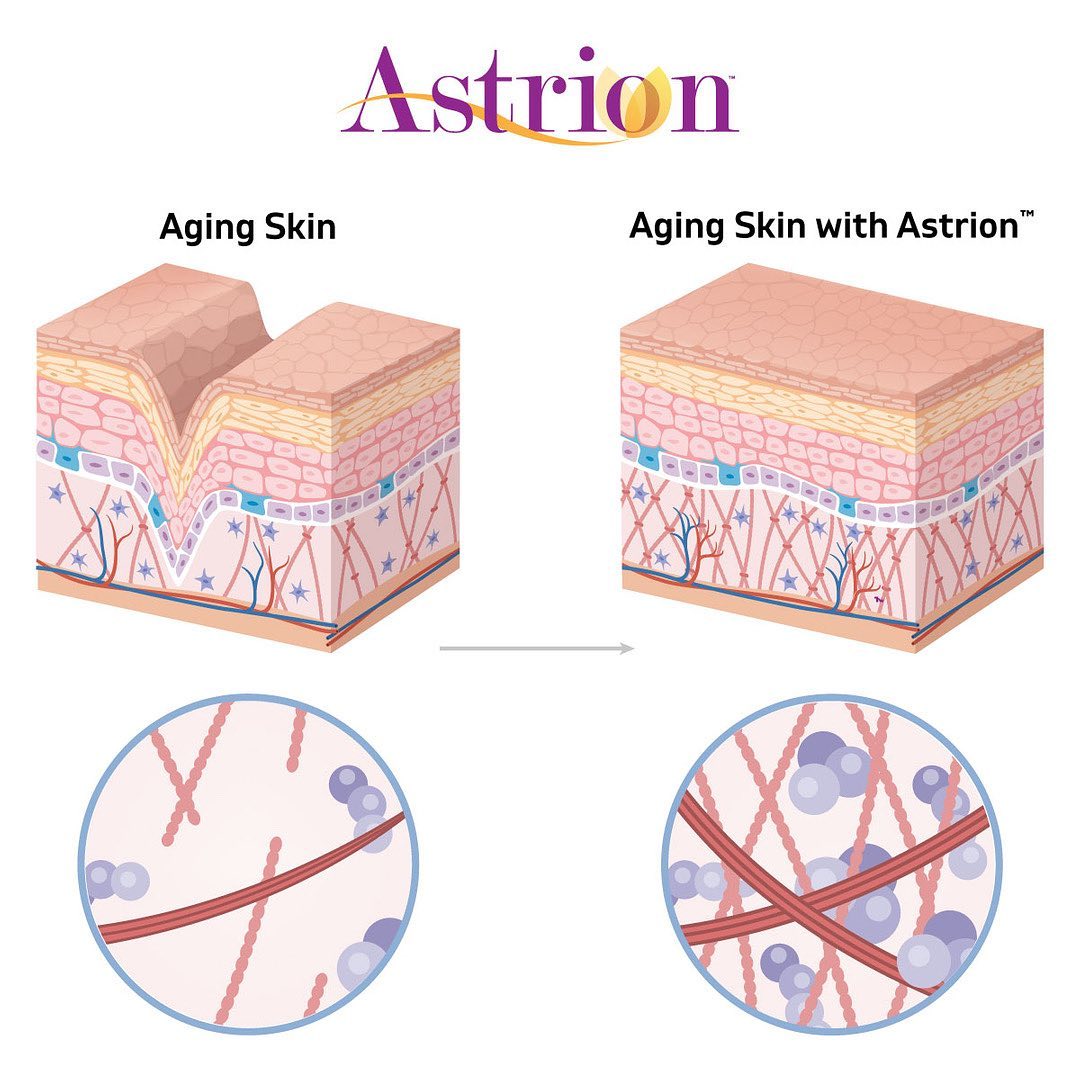
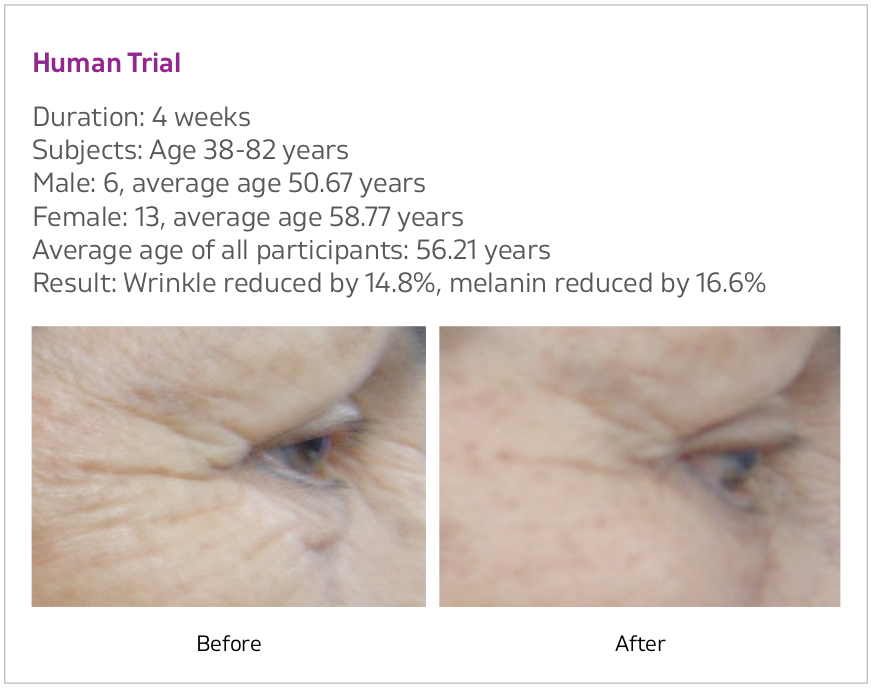
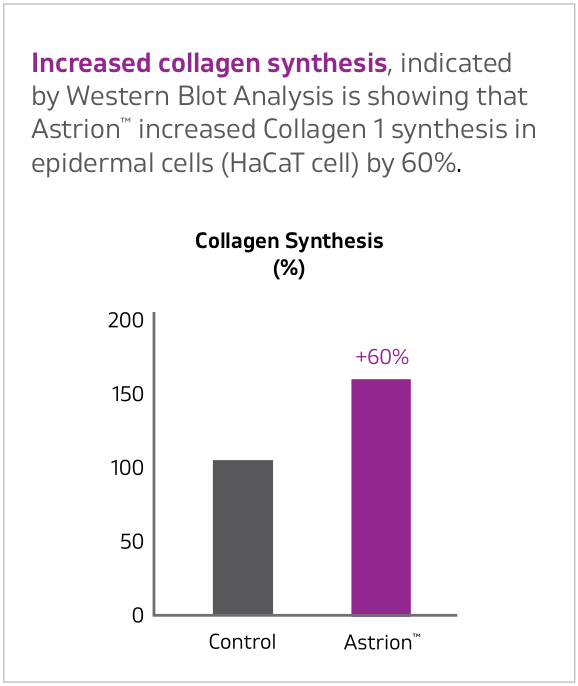
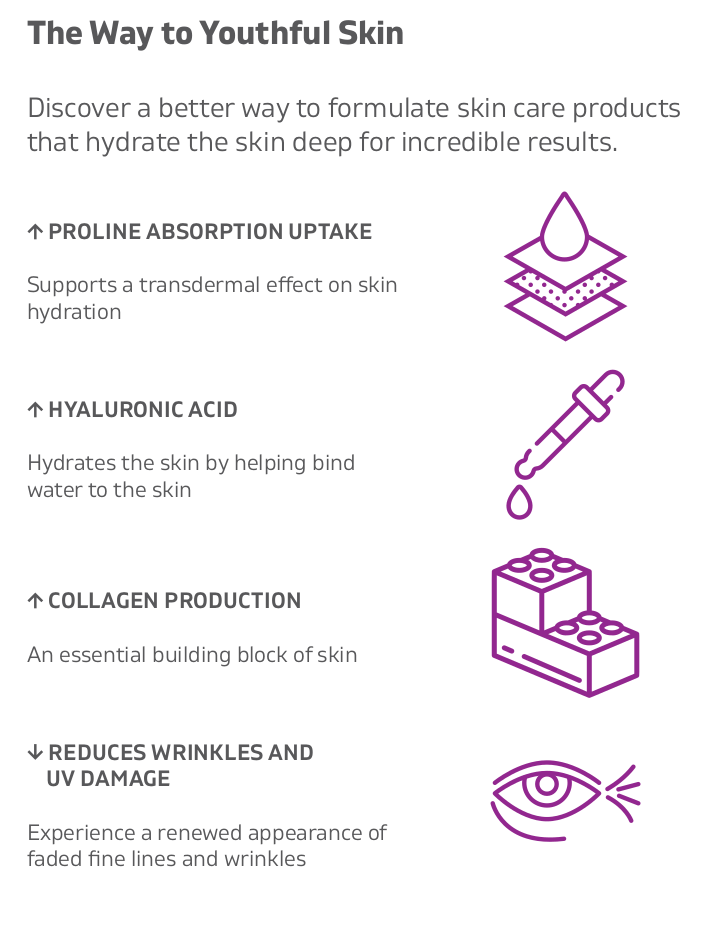
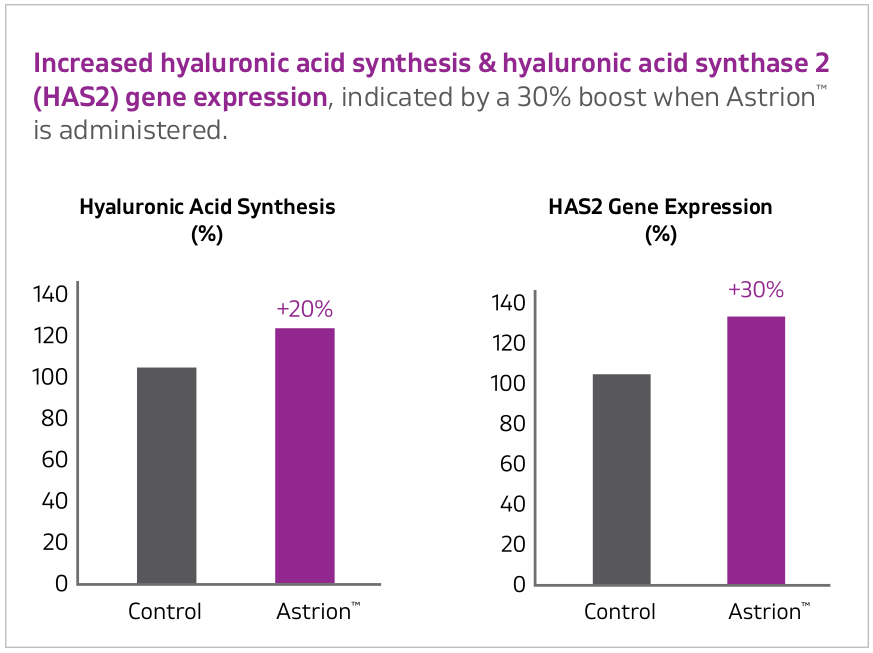

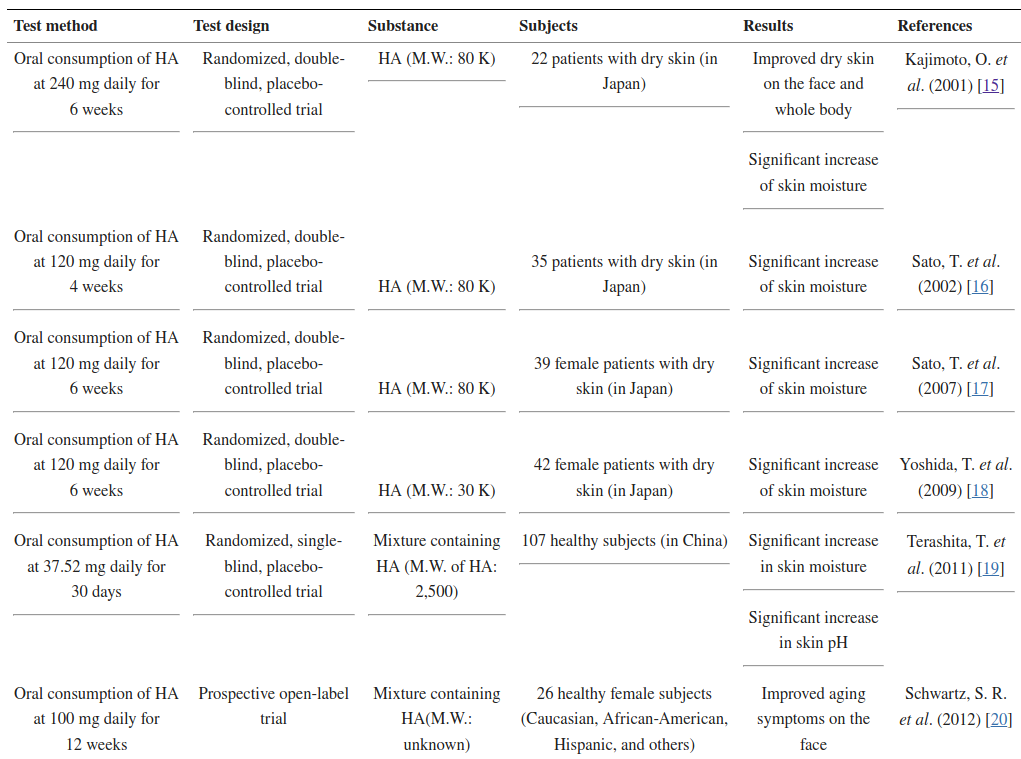
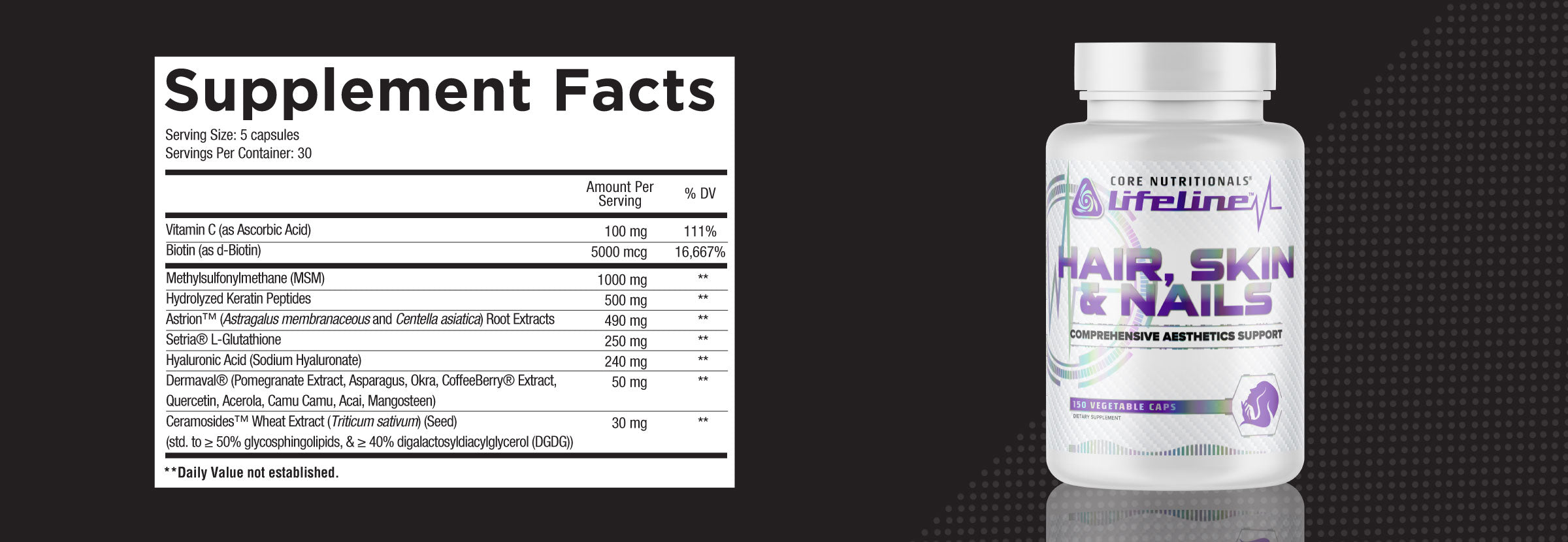

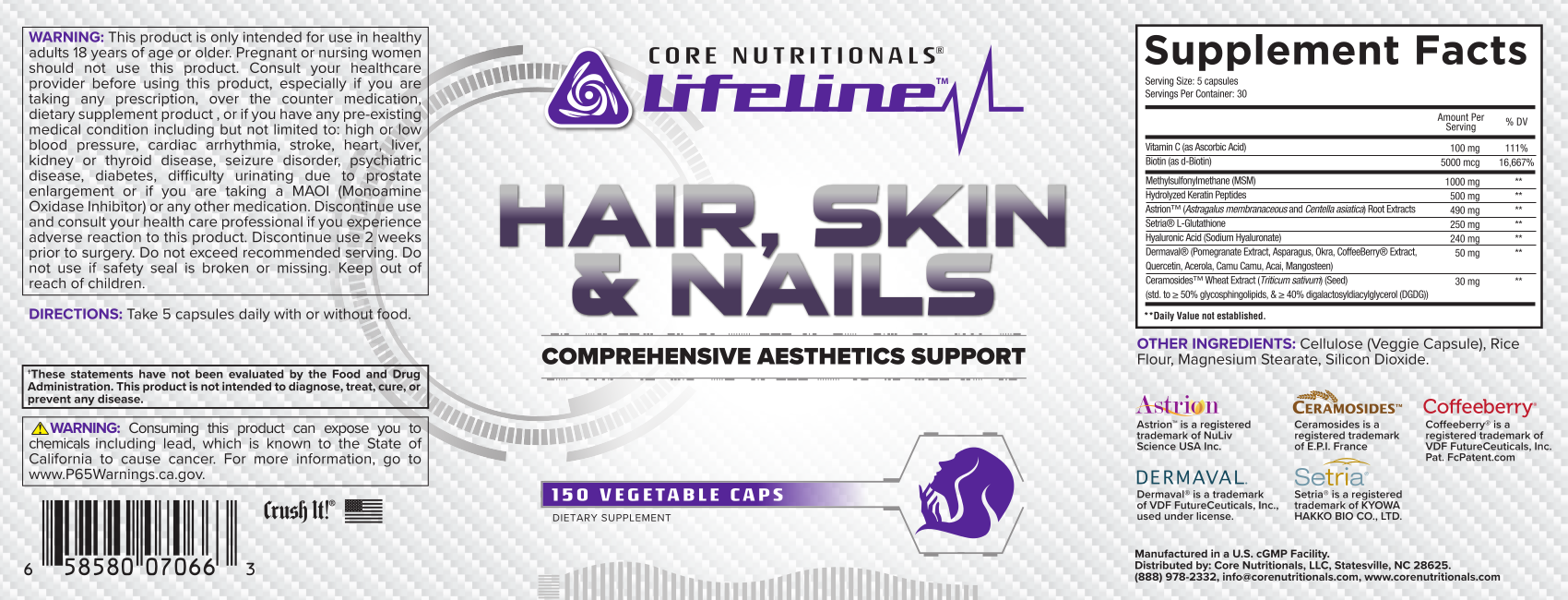


Comments and Discussion (Powered by the PricePlow Forum)